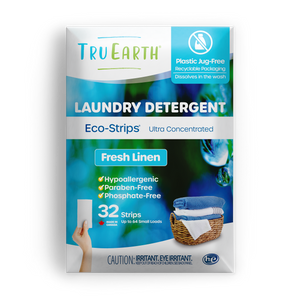Nowadays, more and more people are seeking sustainable alternatives in all aspects of life, including cleaning tools.
Traditional cleaning brushes, sponges, and cloths often contribute to plastic waste and environmental harm. This guide will explore the importance of sustainable cleaning tools and provide tips for choosing eco-friendly options to create a greener home environment.

The Need for Sustainable Cleaning Tools
Traditional cleaning tools, such as plastic brushes, synthetic sponges, and disposable cloths, significantly impact the environment. These tools often end up in landfills, where they take hundreds of years to decompose, releasing harmful chemicals into the soil and water.
Additionally, many conventional cleaning brushes and sponges are made from non-renewable resources, further depleting the planet's natural resources. Therefore, shifting towards sustainable cleaning tools is essential to reduce waste and minimize environmental damage.
Benefits of Eco-Friendly Cleaning Tools
Introducing a greener approach to household cleaning can bring numerous benefits to your home and the environment. Let's explore the benefits of incorporating eco-friendly cleaning tools into your routine.
Environmental Sustainability
Switching to eco-friendly cleaning tools offers a significant benefit to the environment. These tools are typically made from renewable materials such as bamboo, organic cotton, and plant-based fibers.
Using materials that can be replenished naturally over time reduces reliance on finite resources and promotes environmental sustainability.
Reduced Environmental Impact
Traditional cleaning tools often end up in landfills, which can take hundreds of years to decompose, releasing harmful chemicals into the environment.
In contrast, eco-friendly cleaning tools are biodegradable and compostable, minimizing their environmental impact. By choosing these tools, we help reduce plastic waste and protect ecosystems from pollution.
Healthier Indoor Environment
Eco-friendly cleaning tools contain fewer harsh chemicals and toxins compared to conventional ones. Harsh chemicals in traditional cleaning products can release volatile organic compounds (VOCs) into the air, contributing to indoor air pollution.
By opting for eco-friendly tools, we create a healthier indoor environment with cleaner air and fewer harmful pollutants.
Long-Term Cost Savings
While eco-friendly cleaning tools may have a slightly higher upfront cost, they often offer long-term savings.
Sustainable brushes, sponges, and cloths made from natural materials tend to be more durable and reusable. This reduces the need for frequent replacements, ultimately saving money and reducing environmental impact.
Supporting Sustainable Practices
Choosing eco-friendly cleaning tools supports companies and manufacturers that prioritize sustainability. By supporting sustainable practices, we encourage more companies to adopt eco-friendly manufacturing processes and reduce their environmental footprint.
Our purchasing decisions can drive positive change in the industry and promote a greener, more sustainable future for all.
Choosing Sustainable Brushes
When selecting sustainable brushes for cleaning tasks, consider materials such as bamboo, recycled plastic, or natural fibers like sisal or coconut coir. Bamboo is an excellent choice due to its rapid growth rate and sustainability, making it an eco-friendly alternative to traditional plastic brushes.
Look for brushes with replaceable heads to extend their lifespan and minimize waste. Additionally, opt for brushes with ergonomic designs for comfortable handling and efficient cleaning.
Eco-Friendly Sponges
Conventional synthetic sponges are often made from petroleum-based materials and may contain harmful chemicals. In contrast, eco-friendly sponges are crafted from natural materials like cellulose, plant-based fibers, or loofah.
These materials are biodegradable and compostable, making them a greener choice for cleaning. Choose sponges with minimal packaging to reduce waste, and consider reusable options that can be washed and sanitized between uses.
Sustainable Cleaning Cloths
Disposable paper towels and synthetic cleaning cloths contribute to landfill waste and environmental pollution. Instead, choose sustainable cleaning cloths from organic cotton, hemp, or bamboo fibers.
These materials are durable, absorbent, and machine washable, allowing for multiple uses and reducing the need for disposable alternatives. Look for certifications such as Global Organic Textile Standard (GOTS) or OEKO-TEX Standard 100 to ensure the cloths are made from environmentally friendly and non-toxic materials.
Care and Maintenance
Proper care and maintenance of sustainable cleaning tools are essential to prolong their lifespan and maximize their eco-friendly benefits. After each use, rinse brushes, sponges, and cloths thoroughly with water to remove dirt and debris.
Allow them to air dry thoroughly to prevent mold and mildew growth. Periodically sanitize brushes and sponges by soaking them in vinegar and water or washing them in hot water with an eco-friendly detergent such as Tru Earth’s detergent strips. Avoid using bleach or harsh chemicals, as they can degrade natural materials and harm the environment.

Embracing Eco-Friendly Cleaning Practices
Choosing sustainable cleaning tools is a simple yet impactful way to reduce your environmental footprint and create a healthier home environment.
By opting for eco-friendly brushes, sponges, and cloths made from natural materials, you can contribute to conservation efforts and promote sustainability. Change to sustainable cleaning tools today and take a step towards a greener, cleaner future for generations to come!


